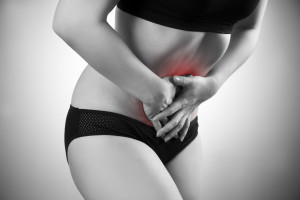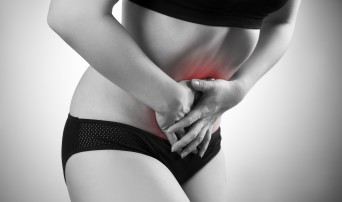[fusion_builder_container hundred_percent=”yes” overflow=”visible”][fusion_builder_row][fusion_builder_column type=”1_1″ background_position=”left top” background_color=”” border_size=”” border_color=”” border_style=”solid” spacing=”yes” background_image=”” background_repeat=”no-repeat” padding=”” margin_top=”0px” margin_bottom=”0px” class=”” id=”” animation_type=”” animation_speed=”0.3″ animation_direction=”left” hide_on_mobile=”no” center_content=”no” min_height=”none”][fusion_text]
The Hidden HCG breakthrough — totally eliminate or control excruciating endometriosis!
The following was adapted from an article by: Jonathan V. Wright, M.D. published in April of 2015 in the journal: The Townsend Letter.

A new “hidden” use for human chorionic gonadotrophin (HCG) has been uncovered. It turns out that HCG—the hormone secreted in the largest quantities by human placentas—may be an effective remedy for painful endometriosis. Fortunately, this research was reported “only” ten years ago, and hasn’t lain buried for thirty-one years (for that, see the December 2012 and February 2013 of Nutrition & Healing which covered previously buried research about HCG, and the stunning story of the reversal of severe spinal cord damage).
This research was first published in 2004 and since that time no contradictory reports have been published. In other words, there’s absolutely no reason why this safe, natural therapy shouldn’t already have been tried for the thousands (or more likely tens or even hundreds of thousands) of women who’ve in effect been told “there’s no treatment for your problem except for birth control pills, pain pills or surgery, but it’ll improve after menopause, so hang in there.”
Endometriosis is reported to occur in 6% to 10% of all women. In this condition cells, which line the uterus migrate outside the womb to other areas in the pelvis. There they remain and grow, often causing painful menstrual periods and/or mild to severe chronic pain between menses. Endometriosis is associated with infertility, too.
In this research, thirty-one women with histologically verified (tissue samples were observed under a microscope to confirm the diagnosis) endometriosis were given 1500 to 5000 IU of HCG once or twice a week for three to twelve months. The results?
HCG significantly reduced pain, irritability and more!
Let’s quote the researchers themselves: “Three months of HCG therapy led to a highly significant reduction of endometriosis-related pain (p < 0.001) and to improvement of disease related parameters such as sleeplessness (p < 0.001), irritability (p < 0.001), overall discomfort (p < 0.001), depressive moods (p < 0.001) and painful defecation (p = 0.01). Dyspareunia [painful sex] and dysmenorrhea [painful menses] also clearly improved (both p < 0.001), though HCG did not lead to significant reduction of dysuria [painful urination] (p = 0.66). Prolonged therapy with HCG for up to 12 months (mean: 4.42 months) did not lead to reduction of the beneficial effect.”
That’s impressive: Endometriosis pain, sleeplessness, irritability, overall discomfort, depressive mood, and painful bowel movements, all significantly improved. The only parameter that didn’t greatly improve was painful urination. And the treatment continued to be effective for up to one year, when (apparently) the research project ended.
The report summary concluded: “HCG injections lead to significant and
clinically relevant reduction in pain intensity and to greatly improved quality of life in women with therapy-refractory endometriosis.”
So if you or a loved are suffering from endometriosis and you would rather not take birth control pills, be on a continuous dose of pain pills, have your uterus removed surgically or wait for menopause—why not consider taking this article to a physician skilled and knowledgeable in natural medicine and natural hormone use, and discuss giving regular HCG injections a try?
Of course, even though the results of this research were very positive, results are never guaranteed. But clearly there’s reason to hope!
Unfortunately, we’ve not been able to find any follow-up research published since this 2004 report. And the group was small, only thirty-one women. But HCG is safe; we all had exposure to it for approximately nine months when we were vulnerable fetuses, during which time it did us no harm at all. There’s also experimental evidence showing
the non-toxic nature of even enormous quantities given to adults.
Some physicians and pharmacists worry about the safety of large quantities of HCG, most likely because the amounts used in “HCG diet plans” have been quite small, 125 to 200 IU daily at most. Of course the safety of any therapy is an important consideration.
To put HCG in perspective however, we need to remember that we all essentially “took a bath” in HCG for the first nine months (some of us perhaps less) of our lives while we were inside of Mom. As tiny as we were we, of course, emerged unharmed by the large quantities of HCG we were exposed to.
Another clue to HCG’s safety can be taken from a research study, which used relatively enormous quantities of HCG, given intravenously. Researchers gave 100,000 to 150,000 IU of HCG to eight men as part of a research study on HCG and thyroid function. Among other things, the researchers wrote: “No clinical side effects were noted… after iv administration of these large doses of HCG.”
Although it’s possible for anyone to react adversely to anything, at present it appears that relatively large quantities of HCG are safe.
Buried endometriosis treatment number two is revealed—
Going gluten-free significantly slashed endometriosis pain!
Just above, you read about the remarkable, but “buried,” 2004 research report about a very successful treatment for endometriosis. It’s definitely worth repeating! The researchers reported that 1500 to 5000 IU of human chorionic gonadotrophin (“HCG”) treatment once or twice a week for three months “led to a highly significant reduction of endometriosis-related pain (p < 0.001) and to improvement of disease related parameters such as sleeplessness (p < 0.001), irritability (p < 0.001), overall discomfort (p < 0.001), depressive moods (p < 0.001) and painful defecation (p = 0.01). Dyspareunia [painful sex] and dysmenorrhea [painful menses] also clearly improved (both p < 0.001), though HCG did not lead to significant reduction of dysuria [painful urination] (p = 0.66).”
This is a terrific breakthrough for an excruciatingly painful condition for which there has been no effective treatment! And now there’s even more good news about endometriosis relief: it appears to be yet another condition that responds significantly to gluten elimination.
In 2011, Swedish researchers reported that women diagnosed with celiac disease (a major type of gluten intolerance) had an increased risk of endometriosis. Although they didn’t report about endometriosis risk in women with “non-celiac gluten intolerance” as well, there’s good reason to suspect the same increased risk.
In 2012, Italian researchers published results of a study in which 207 women with chronic pelvic pain caused by endometriosis were placed on a gluten elimination diet for twelve months. One hundred fifty six (75%) of the women had significant pain relief; 51 (25%) did not. None had worsening of pain. But even though pelvic pain was relieved in “only” 75%, all—100%!—of the women reported what the researchers termed a “considerable increase” (p
Since women have been reported to bring dramatic relief from endometriosis using HCG it might seem like eliminating gluten is unnecessary, but for the best total body health results anyone with endometriosis should always use HCG and go gluten-free. Even if HCG eliminates the pain of endometriosis, the underlying gluten sensitivity, especially if “hidden”, will cause many other health problems usually undiagnosable by conventional medicine. In fact, non-celiac (“hidden”) gluten sensitivity almost always inhibits the assimilation of multiple nutrients, resulting in a variety of health problems.
Buried endometriosis treatment number three:
Melatonin significantly relieves endometriosis pain!
Now it’s December 2014, and we’ve just (at the time of this writing) found a research report about relief of endometriosis pain with melatonin, the hormone best known for it’s sleep-inducing activity. This time, it’s Brazilian researchers, reporting about forty women with endometriosis, ages 18 to 45, twenty of whom took placebo, twenty of whom took melatonin (10 mg) for eight weeks. Analysis showed that (compared with placebo) melatonin treatment reduced daily pain scores by 39.80% (p<0.01, for the technically inclined) and pain with menstrual periods (“dysmenorrhea”) by 38.01% (p Just a thought: all of this breakthrough research for women with endometriosis was done in Austria, Sweden, Italy, and now Brazil, not in these United States. None of it was publicized by the American media in 2004, 2011, 2012, 2013, or since. Makes one wonder what other non-patent-medicine remedies for other chronic problems are also being ignored.
References:
Ambros V. Huber, Johannes C. Huber, Andrea Kolbus, Martin Imhof, Fritz Nagele,
Demosthenes Loizou, Ulrike Kaufmann, and Christian F. Singer Systemic HCG treatment in patients with endometriosis: A new perspective for a painful disease. Wien Klin Wochenschr 2004;116/24:839-843 (Weiner Klinische Wochenschrift, the Middle European Journal of Medicine, printed in Austria)
Sowers JR, Hershman JM, Carlson HE, Pekary AE. Effect of human chorionic gonadotropin on thyroid function in euthyroid men. J Clin Endocrinol Metab. 1978 Oct;47(4):898-901
Ambros V. Huber, Johannes C. Huber, Andrea Kolbus, Martin Imhof, Fritz Nagele,
Demosthenes Loizou, Ulrike Kaufmann, and Christian F. Singer Systemic HCG treatment in patients with endometriosis: A new perspective for a painful disease. Wien Klin Wochenschr 2004;116/24:839-843 (Weiner Klinische Wochenschrift, the Middle European Journal of Medicine, printed in Austria)
Stephansson O, Falconer H, Ludvigsson JF. Risk of endometriosis in 11,000 women with celiac disease. Human Reproduction 2011;26(10):2896-2901
Marziali M, Vemza M, Lazzaro S et al. Gluten-free diet: a new strategy for management of painful endometriosis related symptoms? Minerva Chirurgica 2012;67(6):499-504
Schwertner A(1), Conceição Dos Santos CC, Costa GD, Deitos A, de Souza A, deSouza IC, Torres IL, da Cunha Filho JS, Caumo W. Efficacy of melatonin in the treatment of endometriosis: a phase II, randomized, double-blind, placebo-controlled trial. Pain 2013 Jun;154(6):874-81.
Dr. Howton’s comments:
When treating endometriosis at Restore Health we integrate a number of synergistic modalities including those covered in this article. First and foremost we ensure that Estrogen & Progesterone levels are balanced. Estrogens stimulate endometrial cells while Progesterone keeps the effects of Estrogens in check. Many times endometriosis symptoms will resolve when adding bio-identical progesterone in a cyclical fashion, which involves varying the amount with the natural hormonal rhythm. The highest amount being during the week preceding menstruation, as this is the time when Estrogen levels are the highest.
If we add Progesterone to the items covered in this article a natural approach to treating endometriosis would include the following:
1. Cyclical Bio-identical Progesterone.
2. A gluten free diet.
3. Melatonin 9-12 mg at bedtime.
And if above does not correct symptoms one would consider adding:
4. HCG 1,250 mg twice per week for three months.
All of these treatments are natural and lack the side effects often found in more “traditional” approaches.
Back ↵[/fusion_text][/fusion_builder_column][/fusion_builder_row][/fusion_builder_container]


